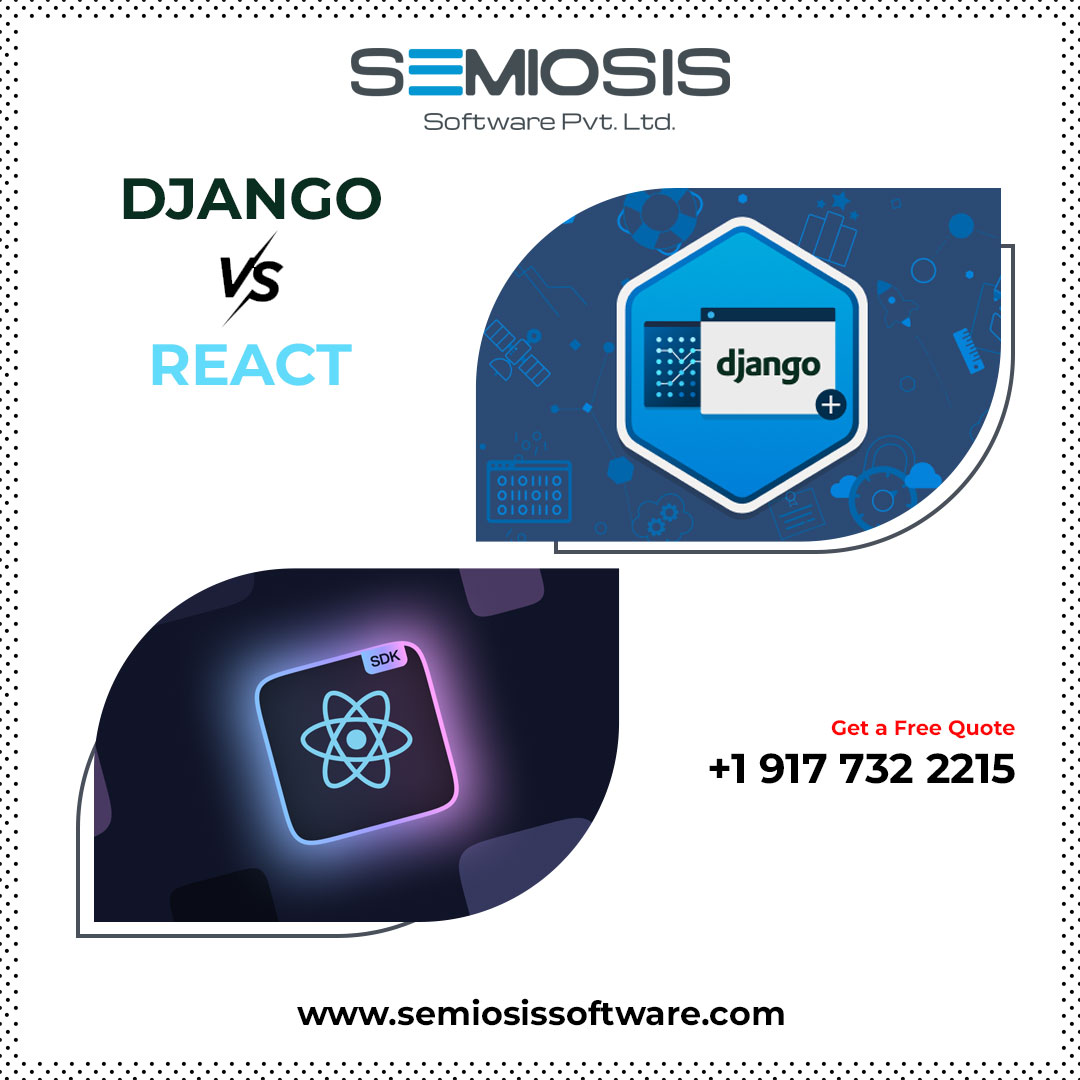Django vs React: Choosing the Right Framework for Web Development
In the world of web development, choosing the right framework can be a daunting task. Two popular options, Django vs React, stand out for their unique strengths and use cases. Django, a high-level Python web framework, and React, a JavaScript library for building user interfaces, each offer distinct advantages depending on the project requirements and developer preferences. Let’s explore the differences between Django vs React to help you make an informed decision.
Django: Power of Python for Backend Development
Django is a robust, full-stack web framework that follows the DRY (Don’t Repeat Yourself) principle and emphasizes rapid development. Here are some key features of Django:
-
Batteries-included: Django comes with a vast collection of built-in features and modules, including authentication, ORM (Object-Relational Mapping), admin panel, and form handling. This comprehensive nature minimizes the need for third-party libraries, reducing development time and complexity.
-
ORM and Database Support: Django’s ORM simplifies database interactions by abstracting SQL queries into Python code, making it easier to work with databases. It supports multiple database engines such as PostgreSQL, MySQL, SQLite, and Oracle, offering flexibility for different project requirements.
-
Security: Django provides built-in protection against common security threats like SQL injection, CSRF (Cross-Site Request Forgery), and XSS (Cross-Site Scripting). Its authentication system offers secure user authentication and authorization mechanisms out of the box.
- Scalability: Django is highly scalable and suitable for building large-scale applications. It supports horizontal scaling through load balancing and vertical scaling by optimizing code and database queries.
-
Community and Documentation: Django has a vibrant community and extensive documentation, making it easy for developers to find solutions to common problems and stay updated with best practices.
React: Declarative UI for Frontend Development
React is a JavaScript library developed by Facebook for building interactive user interfaces. It has gained popularity for its component-based architecture and virtual DOM rendering. Here are some notable features of React:
-
Component-Based Architecture: React allows developers to create reusable UI components, making it easier to manage complex user interfaces. Components encapsulate both the UI and behavior, promoting code reusability and maintainability.
-
Virtual DOM: React uses a virtual DOM to efficiently update the DOM by minimizing direct manipulation. This approach results in better performance and smoother user experiences, especially in applications with dynamic data updates.
-
Unidirectional Data Flow: React follows a unidirectional data flow, where data flows in a single direction from parent to child components. This helps in maintaining predictable state management and simplifies debugging.
- React Native: React extends its capabilities to mobile app development through React Native, allowing developers to build native mobile apps using JavaScript and React. This cross-platform compatibility enables code sharing between web and mobile applications.
-
Ecosystem and Community: React has a thriving ecosystem with a rich collection of libraries, tools, and extensions (e.g., Redux for state management, React Router for routing). The community is active and supportive, providing resources and guidance for developers.
Choosing the Right Tool for the Job – Django vs React
When it comes to choosing between Django vs React, there is no one-size-fits-all answer. The decision depends on various factors such as project requirements, team expertise, scalability needs, and personal preferences.
- Use Django if:
- You prefer working with Python and need a full-stack framework for rapid development.
- You require built-in features like authentication, admin panel, and ORM for database interactions.
- You are building data-driven applications or content management systems that rely heavily on server-side logic.
- Use React if:
- You need a flexible and efficient library for building dynamic user interfaces.
- You want to create reusable UI components and follow a component-based architecture.
- You are developing single-page applications (SPAs) or interactive frontends that require real-time updates and smooth user interactions.
In many cases, both Django vs React can be used together to leverage their respective strengths. For instance, Django can serve as the backend API while React handles the frontend presentation layer, offering the best of both worlds.
In conclusion, whether you Choose Django vs React depends on your project goals, technical requirements, and development preferences. Both frameworks have their advantages and excel in different areas of web development. By understanding their strengths and use cases, you can make an informed decision to ensure the success of your web projects. Empower your web projects with Django expertise. Partner with our experienced Django development company for robust backend solutions tailored to your needs. Elevate your user interfaces with React proficiency. Collaborate with our skilled React development company for dynamic frontend solutions that captivate audiences.






